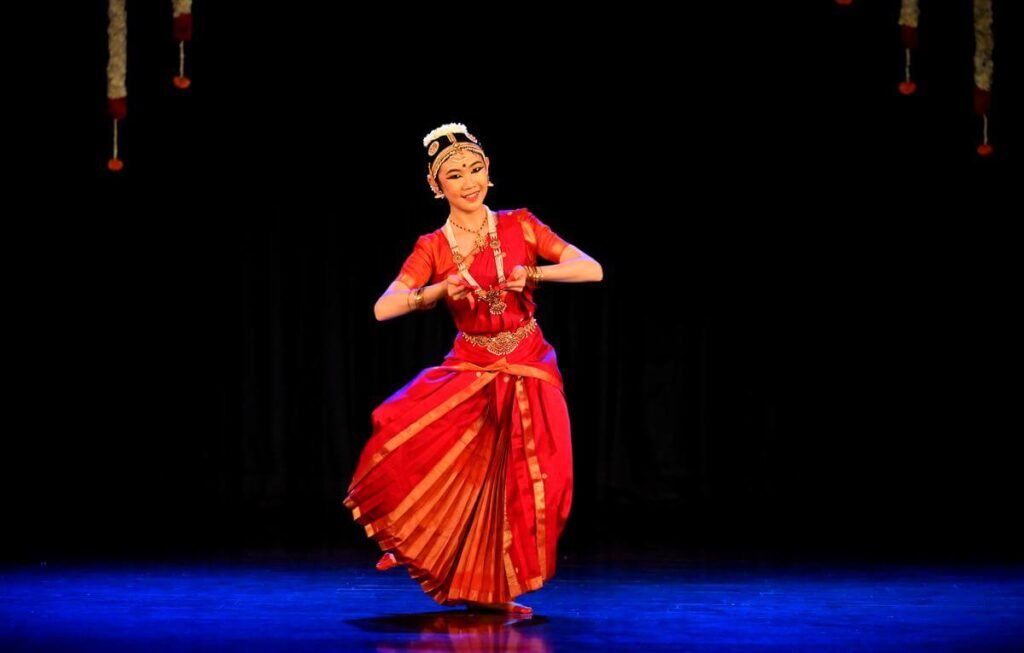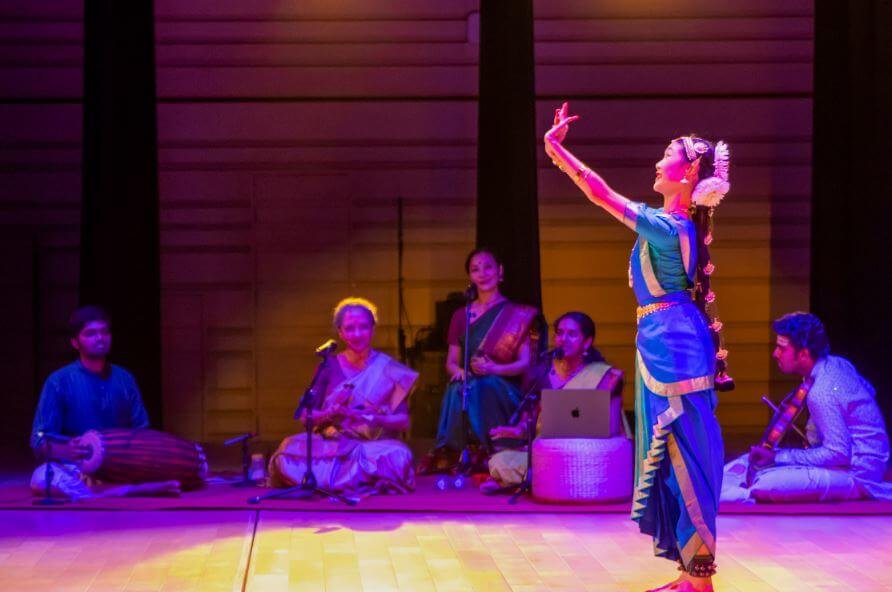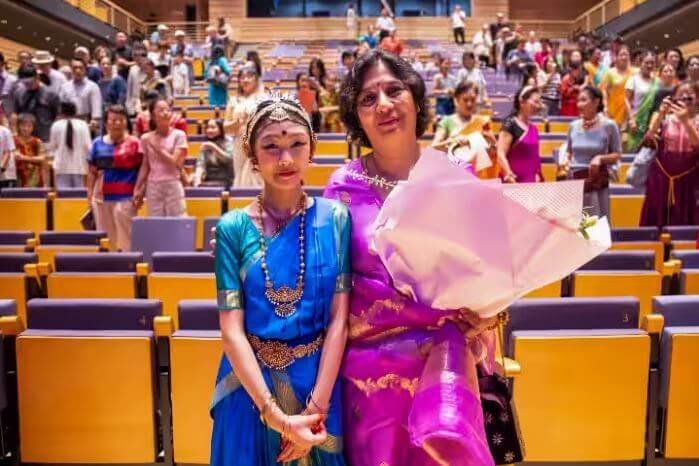A young Lei Muzi Chinese Teenager Make History with ‘Arangetram’, the art of Bharatanatyam in China. It has introduced a new era in the life of the ancient Indian dance form which has now begun to catch up with people from the neighboring country. On August 11, 2024, Lei danced for Leela Samson, a former great Bharatanatyam dancer, Indian diplomat, as well as Chinese fans. The event was aimed to present the cultural bilateral between India and China and prove the tendencies of the growing popularity of the Bharatanatyam in China. It has emerged that Lei has delivered a very striking performance, which is already defining a new era for this classical dance style.
Lei Muzi’s Arangetram: A Landmark Performance
Lei Muzi’s Arangetram was not just another debut—it was the first time a student trained entirely in China performed this classical dance on Chinese soil. Chinese Teenager Make History moment, emphasizing the dedication and passion of a young Chinese teenager who embraced Bharatanatyam. T.S. Vivekanand, the First Secretary of the Indian Embassy, attended the performance and highlighted the traditional execution of the event. He praised the cultural significance of this achievement, noting how it has deepened ties between Indian and Chinese traditions. This performance of Bharatanatyam’s Arangetram reflects the art’s growing appeal and cross-cultural appreciation in China.
The Journey of Lei Muzi: From Student to Performer
Lei Muzi’s journey with Bharatanatyam began in 2014 when she joined the Bharatanatyam school run by Jin Shan Shan. Lei dedicated herself to mastering this Indian classical dance over a decade. Her story of dedication best epitomizes the dedication that it takes to achieve the Arangetram goal.

In the two years, she spent her time learning not only the movements of Bharatanatyam but also the spirit of Indian people. From Lei, dance was not only an art but something she seemed to embrace in her everyday life, a way of embracing part of her Indian tradition. She wanted, me to fall in love with Bharatanatyam since I joined Jin’s school. It’s more than a dance; it’s part of my daily life and my connection to Indian culture, Lei shared. Her story highlights the enduring appeal of Indian classical dance forms beyond India’s borders.
Jin Shan Shan’s Role in Nurturing Lei’s Talent
The contribution of Jin Shan Shan in the story cannot be underestimated especially about Lei Muzi. Lei was inspired by Jin, the first Chinese Bharatanatyam dancer who performed her Arangetram in New Delhi, in 1999. She marked her own life experience and contributed to the development of Lei’s gift throughout the years of her training.
“Bharatanatyam has brought us together like a family. For ten years, Lei has come to my home every weekend to attend classes, which not only let me witness her growth but also made us family,” Jin shared. Her dedication as a teacher of Bharatanatyam has played a key role in making Lei’s Arangetram a reality.
Jin, who has held many Bharatanatyam performances in China and India, expressed her pride in witnessing her student’s remarkable achievements. For Jin, the event represented a cultural celebration and a milestone in Bharatanatyam’s journey in China.
Arangetram in China: A Step Toward Cultural Unity
The Arangetram ceremony is one of the most prominent in the course of any Bharatanatyam dancer throughout its entire life. It is the final form of their dancing education and enables them to dance on their own. In Lei Muzi’s Arangetram, there was classical music from Chennai more or less as the performance was a traditional event of great pomp and circumstance. There was(COMM) a special airplane with musicians invited to support Lei that also gave a kind of truth to the show. In her show, she performed classic dance for two hours and some of the dances mischievously mesmerized the audience.

The event attracted a huge contingent of people among them Indian officials and fans who gave a supportive reception. There was much warmth and resultant positive sentiment within the ethno-cultural environment. Hayley’s Lei Muzi’s Arangetram was much more than a tribute to her gifted body and soul: It was a culture appreciation tour between India and China.
Bharatanatyam’s Growing Popularity in China
Bharatanatyam one of the oldest classical dance forms belongs to Tamil Nadu origin and the literature dictates Silappatikaram and Natya Shastra of Bharata Muni. This is an Indian classical dance that has its roots in the theory mentioned and explained in the Natya Shastra.
Currently, Bharatanatyam dances have attracted Chinese people who have displayed interest in dancing. Lei Muzi’s performance has further highlighted this growing trend. The dance form’s elegant movements, rich expressions, and cultural depth have attracted many in China. Lei’s Arangetram represents a milestone in Bharatanatyam’s popularity outside India, proving that art knows no boundaries. Lei Muzi’s performance has further highlighted this growing trend. The dance form’s elegant movements, rich expressions, and cultural depth have attracted many in China.
Lei’s Future: A Promising Journey in Bharatanatyam
Chinese Teenager Make History with Arangetram performance, Lei Muzi is set to continue her Bharatanatyam journey. She is scheduled to perform in Chennai, which will be another significant event in her dance career. This performance will connect her further to the roots of Bharatanatyam and allow her to share her talent with Indian audiences. Lei Muzi’s story serves as an inspiration for other young dancers and emphasizes the power of cultural exchange.

That successful Arangetram performance which was held in the past is a testimony to the development of Bharatanatyam in China that also depicts the cultural relation between two countries. From its origin, the art of Bharatanatyam has remained connected with cultural values and has bridged many across the world through art.
Conclusion
As we watched Lei Muzi’s Arangetram performance more than just a dance accomplishment cultural ties between India and China. With her dedication and under the company of Jin Shan Shan, Bharatanatyam has come to the Chinese Teenager Make History. If traditional art forms like Bharatanatyam can go global, this event proves how globalization can bring people’s art together. Lei’s experience serves as a testimony to how arts help foster cultural relations, generate cultural interest, and develop enduring relations between different cultures of different industries.
FAQs
It was the first Arangetram performed in China by a student trained there.
Jin Shan Shan, a renowned Bharatanatyam dancer, trained Lei Muzi.
Bharatanatyam originated also in Tamil Nadu, based on one of the oldest Indian texts, Natya Shastra.
Lei performed her Arangetram on August 11, 2024.
